Premium Only Content
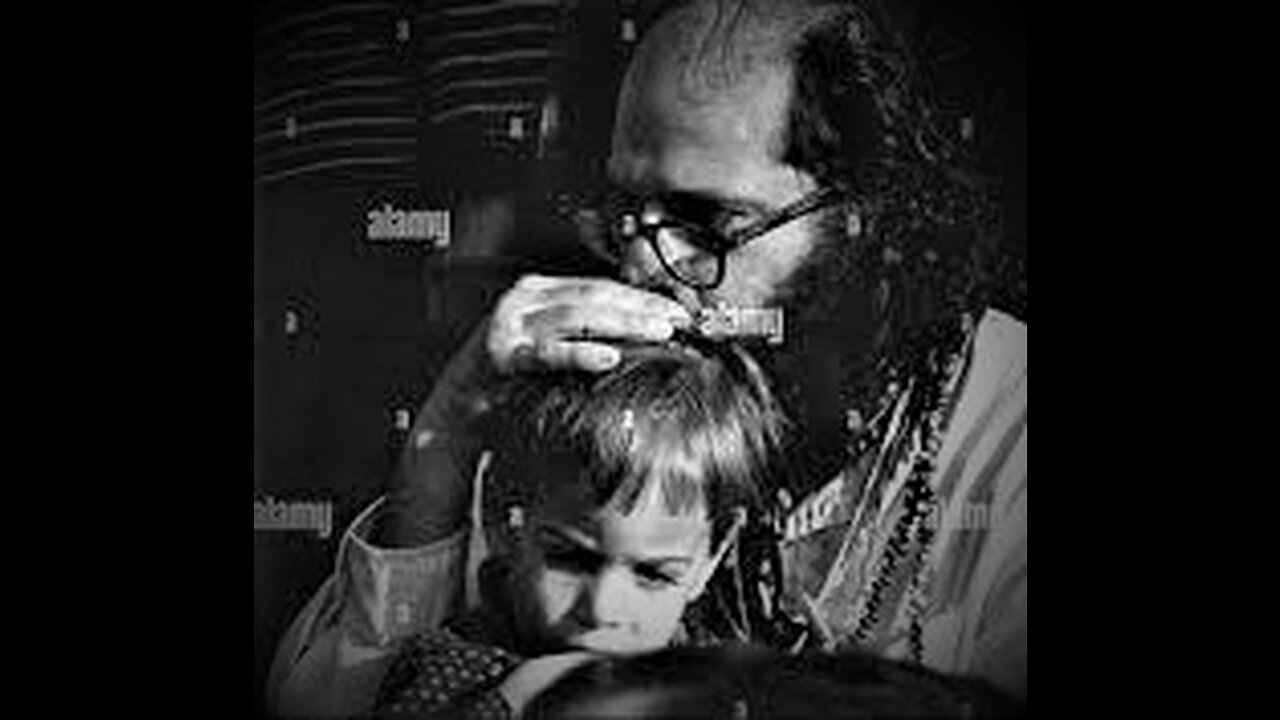
Jewish Allen Ginsburg's LSD generation
Acid. Windowpane refer to the psychedelic drug known to the scientific community as LSD-25
Also known as mellow yellow, windowpane, and Orange Sunshine
LSD vs acid. Lysergic acid diethylamide-25 (LSD) is the chemical name of the popular psychedelic drug, which was first synthesized in 1938.
Acid is a slang term for the same drug, a term which, according to our best research, appeared in the American lexicon by 1965—a year before the drug was first criminalized in California and Nevada.
The first day of Californian criminalization was protested with a celebration—as if we could expect anything less from a community of psychonauts. “We declare the identity of flesh and consciousness,” reads the public invitation to the Love Pageant Rally, “all reason and law must respect and protect this holy identity.” The call to action was strong enough to inspire over 1,000 individuals to gather in San Francisco’s Golden Gate Park. Although, the appearance of the Grateful Dead couldn’t have hurt the numbers, either.
The Love Pageant Rally, of course, was not successful in stopping the criminalization of LSD. Four years later, the psychedelic became federally illegal via the Controlled Substances Act of 1970, which lumped the low-risk psychedelic into the same category as heroin and many narcotics.
The legislation also declared that LSD had no medical value, functionally barring scientists from accessing the chemical for medical research. But, that doesn’t mean that culture didn’t push back.
“Acid” is far from the only slang term for LSD; the drug has had more than its fair share of nicknames over the decades. A personal favorite is Mellow Yellow, which is a tip of the hat to a Donovan song by the same name.
Incidentally, the song also debuted in 1966. “They call me Mellow Yellow,” sings soft-spoken Donovan as he strums his acoustic guitar. Exactly what the song’s “mellow yellow” is referencing, however, is ambiguous—and a very good story.
One rumor suggests that the song references baked banana peels, which at one point in time were falsely thought to be hallucinogenic—or was it a hoax?
A recipe for preparing “bananadine” from the baked scrapings of banana peels circulated at festivals.
The Food and Drug Administration performed scientific experiments. “A laboratory apparatus ‘smoked’ banana peels for three weeks and never did get high,” the agency wrote in a press release. The New York Times Magazine called banana scrapings a mild kick.
Fact: there is no such thing as bananadine. But, this odd pop culture trend just might have been one of the best made-you-look moments of 1960s counterculture.
The vernacular surrounding LSD spans far beyond the LSD vs acid debate. Each individual term is an artifact of the time in which it was born, and each carries its own story, its own legacy.
The truth behind where such language emerged is deeply embedded somewhere in the mythos of the time.
It also goes by “L” when you’re in a pinch.
All classic LSD is made of the same basic stuff, no matter if you call it LSD vs acid. Although, the process of making it can look quite different depending on what recipe was used to make the psychedelic. Unlike psilocybin, mescaline, and several other natural psychoactive drugs, LSD is partially synthetic.
That means that while the base of the compound is natural, numerous man-induced chemical transformations need to take place before the final structure of the LSD-25 molecule takes shape.
The backbone of LSD is lysergic acid. So, to make LSD, chemists often start with a natural source of lysergic acid. One potential source is the ergot fungus, which naturally produces lysergic acid.
Another source is lysergic acid amide (LSA), a similar psychedelic compound that is naturally found in the seeds of morning glory and Hawaiian baby woodrose plants. Organic chemists then use a series of chemical reactions to convert these compounds into the drug that we’ve come to call acid. Once created, acid is typically dispensed as a liquid onto an absorbent paper, a sugar tablet, or a gelatin sheet—this is how most people first encounter the psychedelic.
Back in the 1960s, underground chemists in North America were the largest global producers of LSD. Things are different today. Much of today’s illicit synthetic drug manufacturing has gone overseas, although it is difficult to find reliable information on the main international sources of high-quality LSD today.
In 2019, the largest seizures of LSD came from India, the Bolivarian Republic of Venezuela, Australia, and Argentina. Yet, we also know that some which are called LSD are actually something else entirely. According to the 2020 Global Synthetic Drugs Assessment from the United Nations Office on Drugs and Crime, new psychoactive substances may be applied to blotter and falsely sold as LSD. New psychoactive substances are novel synthetic compounds that may mimic the experiential effects of certain drugs, but are unstudied and have largely unknown effects and safety risks.
This practice, according to the report, is most prevalent in Central and South America. For this reason, it’s important to test LSD with a test kit before partaking.
What Does Acid Look Like?
One word: colorful. Acid is a unique drug for many reasons. Not only is it partially synthetic, but you don’t typically swallow a pill or make tea out of this potent psychedelic. Instead, micrograms of liquid LSD are dispensed onto an absorbent paper, called blotter paper.
Blotter paper historically comes in 7.5-inch sheets, with up to 900 tabs of acid on each sheet. One tab of drug is equivalent to one dose of acid—about 100 micrograms.
Tabs are the most iconic way of consuming acid—and one of the most common acid slang terms you’ll come across. Well, apart from “tripping” and “dropping acid” perhaps. Acid tabs have their own unique contributions to psychedelic culture, much like the various nicknames for the psychedelic. In the 1960s, suppliers began to decorate blotter paper with artwork, which was sometimes incredibly intricate and complex.
In many ways, this artwork became a common counterculture symbol. Yet, it also served a more business-oriented purpose: branding. If you recognize the artwork, then you recognize your supplier.
It’s worth noting, however, that tabs are not the only way to consume acid. LSD is most often prepared in a solution, which means that you can drop acid on just about anything that will absorb liquid. This includes sugar cubes and tablets. Although, these preparations are not as colorful as blotter.
There’s no doubt that acid culture has its own vernacular. Much of the language used by acid culture remains largely unchanged since the words were first popularized in the 1960s, which is arguably the decade that birthed acid slang. There are some differences, however.
For example, while Orange Sunshine was a popular type of acid through the late 60s and early 70s, you won’t find the real deal at your next Burning Man or Electric Daisy Festival. Today’s illicit drug market is more opaque; the average consumer who picks up a tab at a music festival likely has no idea which region or country their acid came from, let alone who might have made it. Still, in case you’re wondering about the Windowpane someone is peddling, it’s worth getting familiar with a few key terms—beyond the standard LSD vs. acid.
There are few tabs as recognizable as Orange Sunshine, the most famous acid in the world. Orange Sunshine, sometimes called California Sunshine, is the creation of Nicholas Sand and Tim Scully, who just might be the most well-known LSD chemists in history. (Well, with the exception of the drug’s original creator, Albert Hofmann, of course.)
Orange Sunshine made its debut in San Francisco in 1967 and eventually made its way around the world. It often came in two distinct forms: an orange LSD-soaked pill or an iconic pale-orange square was adorned with a bright, smiling sun. Sand and Scully reportedly produced four million doses in a single month. The scale of production made Orange Sunshine a household name, of sorts, amongst the hippie community. Yet, Sand and Scully’s mission also inspired a group of LSD evangelists—dubbed the Brotherhood of Eternal Love—to distribute the drug and make it accessible to as many people as possible.
Sand describes his inspiration for starting an underground LSD lab in the documentary film The Sunshine Makers.
Sitting nude in front of a fire, Sand tripped on acid for the first time. “…A voice came through my body,” he shares. “It said, ‘Your job on this planet is to make psychedelics and turn on the world.’” And that’s exactly what they did—made millions of tabs of acid to share with the psychonauts around the globe. Unfortunately, however, the heyday of the Orange Sunshine lab was relatively short-lived. Scully was arrested in 1969 and Sand in 1973.
Tabs are the most common way to take acid. Yet, they’re certainly not the only way—especially if you remember the 80s. Windowpane acid is an alternative to blotter tabs that uses gelatin as a base. They earned the name “windowpane” because, as rumor has it, underground chemists or distributors used fluorescent light diffusers as molds for gel tabs. Windowpane acid can come in flat sheets, like the colored gels that fit over theatre stage lights to change the tone of the scene, pyramid-shaped squares. It all depends on the mold used by the supplier. This particular LSD preparation was perhaps more popular in the 1980s and 90s than it is now.
Unlike blotter paper, which is either swallowed or spit out, the gelatin-based windowpane acid can dissolve like a semi-hard candy. Nowadays, windowpane tabs are often referred to as gel tabs or jellies.
“Dropping Acid” or “Drop Acid”
You don’t simply eat acid or take acid—you drop acid. As with all acid slang, the exact reason why the phrase “dropping acid” came into existence is difficult to pinpoint. However, there are two influences that perhaps inspired its adoption into the psychonaut lexicon. First, as mentioned above, acid is typically prepared as a liquid. So, you quite actually drop acid onto blotter paper or your tongue using a drop applicator.
Second, we can’t ignore the possible influence of Timothy Leary’s legendary book Turn On, Tune In, and Drop Out, titled after the phrase he popularized in 1966—apparently a very big year for LSD. The phrase “drop out,” Leary reportedly insisted, meant to “drop out of conformity.” Drop out, he explains “means change.”
Acid Cap
We’ve talked about blotter, tabs, and windowpane acid, but what about acid caps? Liquid acid is one of the most common preparations of the psychedelic. But, before LSD is made into a solution, its isolated chemical structure forms a crystal. An acid cap can refer to either a capsule of crystal LSD or a tablet soaked with liquid LSD. The latter is perhaps the most common; it’s far easier to dose LSD as a liquid than it is to dose it as a crystal. It takes mere millionths of a gram to produce a psychoactive experience from LSD. So, diluting crystal into a solution is the easiest way to create doses small enough to consume with any degree of comfort.
Don’t let the name fool you—an acid microdot has nothing to do with microdosing. A microdot is a tiny, pressed pill made with either crystal or liquid LSD and filler.
Most people hold microdots in their mouths or under the tongue before swallowing these tiny pills. The overall effect of microdots can be quite strong. According to Green’s Dictionary of Slang, microdots appeared on the scene by 1972.
Clearlight Acid
Like Orange Sunshine, Clearlight Acid refers to a particular brand of acid, so to speak. It debuted in the Bay Area scene in 1970, made in an underground lab operated by Waldron Vorhees and company. Clearlight’s big claim to fame? It was a potent windowpane acid.
The Vorhees operation reportedly produced over 250 million hits, dosed at hefty 250 micrograms per jelly. The name Clearlight keeps its original meaning today; there will only be one Clearlight in the history of acid slang.
Need Access to Shrooms? Secure your supply with DoubleBlind!
LSD vs Acid: A Conclusion
The psychedelic is always going to be something you drop, no matter if you prefer blotter or windowpane or if you call it LSD vs acid. It’s here to help you “turn on, tune in” and make peace with your “identity of flesh and consciousness.”
While hallucinogens such as mescaline and magic mushrooms impacted 20th-century psychotherapy and popular culture, no psychedelic was as influential or disruptive as LSD
Since its serendipitous discovery, LSD has produced healing and joy, but also controversy and occasionally exploitation.
In the 1930s, Swiss pharmacologist, Albert Hofmann, worked at the Sandoz laboratory in Basel, Switzerland, to produce beneficial compounds derived from the rye fungus, ergot.
Sandoz had been working on ergot derivatives for some years, with its chemists isolating ergotamine, a drug still sometimes used for migraines today, in 1918.
Ergot had been a double-edged sword in Medieval and Renaissance Europe. It helped ease the process of childbirth and its vasoconstrictive properties reduced post-birth bleeding, though with dangerous side effects.
These same properties meant that if people consumed contaminated grain, the result was sometimes widespread poisoning and death.
Hofmann was working to isolate a beneficial compound found in ergot, ergobasine, for further medical use in obstetrics. He continued working with lysergic acid compounds in search of other interesting pharmacological properties.
In 1938, he produced the twenty-fifth substance in a series of lysergic acid derivatives. Its official name was lysergic acid diethylamide, abbreviated as LSD-25.
In the initial testing, Hofmann and his team set out to discover its effect on the uterus. Although it has a significant impact, it was only 70% as effective as ergobasine.
The research report also noted the restlessness of the experimental animals while on LSD-25. This restlessness didn’t arouse any particular interest, and Hofmann moved on with his investigations.
In the years that followed, Hofmann was successful in creating other ergot-derived medications.
Despite this, he could not let LSD-25 go, feeling it could have other properties that he’d missed. So, in the spring of 1943, he repeated his earlier synthesis.
In the final step of this chemical process, Hofmann got his first hint of LSD’s potency.
On April 16, as he was purifying the sample, he was interrupted by unusual sensations: restlessness, a dreamlike state, and closed-eye visuals of kaleidoscopic patterns.
What had caused this? He reasoned that he must have accidentally ingested some of the chemical.
Due to the toxicity of ergot compounds, Hofmann ran a meticulously neat lab. So he knew it must have been a microscopic trace of LSD-25 that led to these effects. How strong was it?
On April 19, 1943, armed only with his lab journal, Hofmann decided to test this substance on himself.
He settled on taking 250 micrograms, thinking that this would be barely noticeable. He couldn’t have been more wrong.
Within two hours of embarking on this experiment, he was getting far more than he bargained for.
Overwhelmed, disoriented, and feeling utterly out of his depth, he asked his lab assistant to bring him home.
Because of the wartime restrictions on vehicle use, they journeyed through Basel by bicycle, inaugurating what would come to be known as ‘Bicycle Day’.
Once he had somehow made it home, Hofmann feared he was losing his sanity or even his life. Familiar objects in his living room, once friendly, turned into demonic, grotesque forms.
Even worse were the changes Hofman perceived in himself.
He became consumed by a demon. It triumphed over his will.
He did not know if he had died, or gone to another world, or another time.
As he passed the peak of the experience, his sense of dread lessened.
He would later recount that he began to enjoy the visuals that appeared when he closed his eyes:
“Kaleidoscopic, fantastic images surged in on me, alternating, variegated, opening and then closing themselves in circles and spirals, exploding in colored fountains, rearranging and hybridizing themselves in constant flux.”
By the next day, Hofmann had recovered from his experience, aware that he’d made a momentous discovery.
Hallucinogens as therapy 1940-1970
After the end of World War II, LSD appeared to get off to a promising start
By 1947, Sandoz had completed safety trials, and in the late ’40s and early ’50s, psychiatrists such as Werner Stoll had begun experimenting on both themselves and patients.
Because of the psychoactive effects of LSD, researchers initially thought that LSD replicated the symptoms of schizophrenia and psychosis.
Much of the initial research carried out in American medical centers focused on LSD’s ability to mimic the effects of mental illness.
Once researchers sampled it for themselves, they realized that the impacts of LSD and its potential therapeutic applications were further reaching than they had previously thought.
As the 1950s progressed, the focus of LSD research continued to explore its potential as an aid to psychotherapy, particularly in treating alcoholism. In one study, Humphrey Osmond, M.D. gave LSD to Bill W., the co-founder of Alcoholics Anonymous.
Around 50% of Osmond’s research subjects altogether quit drinking or significantly reduced consumption.This success rate was approximately ten times as effective as AA without psychedelic therapy.
Working at the Weyburn Mental Hospital in Saskatchewan, Osmond would eventually treat around 2,000 patients with similar levels of success.
Osmond also researched the therapeutic potential of mescaline, leading him to administer it to Aldous Huxley and supervise the experience that would become the basis for The Doors of Perception.
In a later exchange between the two men, Osmond coined the most enduring term for hallucinogenic drugs:
“To fathom Hell or soar angelic, just take a pinch of psychedelic.”
Over the ’50s and early ’60s, psychedelic clinics had sprung up around Europe and the US.
During this time, as many as 40,000 people were prescribed LSD to treat addiction, schizophrenia, and PTSD.
Though LSD was yet to hit mainstream consciousness in the early ’50s, its therapeutic use made inroads into Hollywood with the opening of the Psychiatric Institute of Beverly Hills, where the wealthy and well-connected could undertake LSD sessions for $100 per visit (almost $900 in today’s money).
At this facility, film star Cary Grant famously underwent an estimated 100 LSD treatment sessions between 1958 and 1961, crediting them with finally making peace with his past.
Grant is rumored to have been the person to bring LSD to Timothy Leary’s attention (more about him later), but this is hard to confirm.
Despite LSD’s power to open people’s minds to new possibilities, some of its use during this period was heavily focused on enforcing society’s ideals of what was “normal”. Nowhere was this more apparent than the drive to “cure” homosexuality using psychedelics.
This application of LSD therapy ultimately failed to “convert” patients to heterosexuality, and by the ’70s, the DSM (Diagnostic and Statistical Manual of Mental Disorders) no longer listed homosexuality as a disorder.
The CIA, MK-Ultra, and mind control
The therapeutic misuse of LSD wasn’t the only shadow gnawing at the heart of psychedelic psychiatry. From the earliest stages of psychedelic research in the US, the CIA was embarking on its own, less ethical, applications via programs such as MK-Ultra. Under this program, a poorly supervised CIA research group tested LSD for its potential as a mind-control or truth drug.
Some participants were volunteers, but most were unaware that they had been dosed, and experienced varying levels of trauma.
Almost all the program records were destroyed in 1973 when these abuses came to light, so we may never learn the full extent of the CIA’s wrongdoing.
What we do know is that thousands of people had their autonomy and human rights severely violated in experiments that were unethical and without scientific validity.
Exactly how LSD went from being used in therapy to widespread recreational use in the 1960s is both disputed and complex. However, by some accounts, MK-Ultra played a crucial role in expanding academic research, which then bled out into the broader community.
To be sure, the impacts on culture are undeniable, particularly in music. From the Grateful Dead to Jefferson Airplane and Pink Floyd, musicians sought to articulate their psychedelic experiences.
LSD would have a significant creative influence on the Beatles album Revolver and forever change their creative trajectory.
There were two primary parties promoting LSD within the American counter-cultural movement:
Timothy Leary’s League for Spiritual Discovery and Ken Kesey’s Merry Pranksters.
Timothy Leary’s initial work with psychedelics was through his role as a psychology researcher at Harvard University in the early ’60s, where he and Richard Alpert (later known as Ram Dass) conducted experiments using psilocybin and psychotherapy to reduce prisoners’ likelihood of reoffending.
In an indication of things to come, both Leary and Alpert failed to maintain clear teacher-student and researcher-participant boundaries where psychedelic drugs were concerned, eventually resulting in their dismissal in 1963.
Leary’s League for Spiritual Discovery focused on academic-like experiments related to mystical experiences and the raising of consciousness.
While the League for Spiritual Discovery encouraged the widespread use of LSD (Tune in, Drop in, Drop out), they took few steps to ensure responsible use by those they influenced.
Ken Kesey encouraged public use of LSD through a grassroots approach
He led the Merry Pranksters on a cross-country bus trip fuelled by prodigious amounts of LSD.
Kesey and the Merry Pranksters aimed to confront the banality and conformity of American society with psychedelic-inspired spontaneity. During this experiment, Kesey and the Merry Pranksters had no boundaries with the use of psychedelics. Tom Wolfe wrote an excellent account of this ‘experiment’, which he published as The Electric Kool-Aid Acid Test.
Regardless of whether Leary or Kesey (or both) were at fault, the association between LSD and anti-war hippie countercultures set the scene for a moral panic of epic proportions, which was then shamelessly exploited by then US President Richard Nixon.
Even though adverse events were rare, stories in the media of bad trips, flashbacks, and criminality had overwhelmed LSD’s previously positive image. In this environment, all LSD use, therapeutic or not, and regardless of its relative safety, was seen by governments as drug abuse.
By the mid ‘60s, LSD was well on the way towards being prohibited in most states and countries, with government-sanctioned research largely disappearing for the next 40 years.
Recreational LSD use plummeted over the ‘70s as laws took effect, with MDMA taking its place in the emerging rave culture of the 1980s.
Despite the restrictions on personal use and clinical research that went along with prohibition, LSD has been quietly moving away from its supposedly rebellious associations and returning to its therapeutic roots.
Along with psilocybin and MDMA, LSD research has proliferated in the past decade.
In the past few years, researchers have investigated LSD for use in treating depression and anxiety. Many people have relayed anecdotes about psychedelics aiding their recovery from addiction and substance abuse. This has inspired researchers to return to this application, with results suggesting LSD-assisted therapy produces clinically significant benefits in treating alcoholism.
Today, LSD research, in areas ranging from alleviating chronic neurosis to how microdosing might reduce pain, is conducted at prestigious universities and medical institutions. Biotechnology and pharmaceutical corporations seeking to commercialize psychedelic therapies that use LSD or its derivatives are attracting billions of dollars from investors.
Michael Pollan’s psychedelic exploration, How to Change Your Mind, was selected by The New York Times Book Review’s 10 Best Books of 2018. While it still may be prohibited for most people in most places, in many ways, LSD has never been more mainstream.
black and white boy discovering colored graffiti
Albert Hofmann and Bicycle Days of the future
Away from clinical research, in underground psychedelic communities that are only just starting to venture into the open, commemoration of Hofmann’s discovery has grown into a date for both celebration and reflection.
Psychedelic organizations worldwide host livestreams, get-togethers, and even the occasional bike ride to mark the day that a human first deliberately ingested LSD-25.
The conversations that these community events inspire are more critical than ever. Who, if anyone, should control LSD? Governments?
Multi-billion-dollar corporations? When clinics like the Psychiatric Institute of Beverly Hills reappear, should people still be sent to jail for possessing LSD outside clinical contexts?
Are we paving the way to a golden age of mental health and cognitive liberty, or will we repeat the mistakes of Leary and the Merry Pranksters?
Albert Hofmann called LSD his “problem child”, such was the disturbance to world views and the controversy it produced.
Sometimes problem children “grow out of it”. Other times, we come to realize that they were never the problem; we were.
Bicycle Day on April 19 honors not the two-wheeled mode of transportation, but the colorful ride taken by Swiss chemist Albert Hoffman who accidentally discovered LSD 74 years ago.
In search of new medicines, Hoffman was trying to stabilize lysergic acid, a derivative of a fungal compound used in a migraine medicine.
He ended up synthesizing a compound called lysergic acid diethylamine, or LSD.
Later, he accidentally exposed himself to it and felt dizzy with hallucinations.
On April 19, 1943, he tested it on himself again and needed a lab assistant to help him home, via bicycle, leading to a memorable ride.
Unlike other drugs, however, LSD can blow open – as Aldous Huxley described it – the doors of perception and remove the filters of conventional thought.
It has pushed some of the 20th century’s most creative minds into making important cognitive leaps.
Nobel Prize-winning scientist Francis Crick famously first imagined DNA’s double-helix structure after dropping acid. Steve Jobs described his first trip as one of the most profound experiences in his life.
And in June 20, 1970, Pirates pitcher Dock Ellis threw a no-hitter (or so the legend goes) while tripping on a preposterously large dose of the stuff. Let’s see you do that on meth.
Add to this list of acid acolytes Robert Crumb, the most influential cartoonist of his generation.
His strange, frequently obscene, often hilarious stream-of-consciousness cartoons defined a certain subset of hippydom as much as the Grateful Dead and Ken Kesey. And his style emerged almost immediately after his first trip.
It all started in 1964, when the drug was still legal. Crumb was stuck in a dead end job drawing greeting cards in Cleveland. “I took this very weird drug. Supposedly it was LSD, but it had a really weird effect where it made my brain all fuzzy,” he said while hunched over a drawing pad in Terry Twigoff’s 1994 documentary Crumb. (You can watch the full clip above. ) “And this effect lasted for a couple months.”
The effect of that first encounter proved to be hugely influential, a “road-to-Damascus experience” as he told the Paris Review:
It knocked you off your horse, taking LSD. I remember going to work that Monday, after taking LSD on Saturday, and it just seemed like a cardboard reality. It didn’t seem real to me anymore. Seemed completely fake, only a paper-moon kind of world. My coworkers, they were like, Crumb, what’s the matter with you, what happened to you?
Because I was just staring at everything like I had never seen it before. And then it changed the whole direction of my artwork. […] I got flung back into this cruder forties style, that suddenly became very powerful to me. It was a kind of grotesque interpretation of this forties thing, Popeye kind of stuff. I started drawing like that again.
It was bizarre to people who had known my work before. Even [Mad Magazine Editor Harvey] Kurtzman said, What the hell are you doing? You’re regressing!
A couple of years later, Crumb ditched Cleveland (and his first wife) and headed for San Francisco, which was just starting to become the Mecca of the counterculture.
Soon issues of his Zap Comix would be blowing minds. All of his most famous characters from those cartoons– from Mr. Natural to Fritz the Cat to the Snoid – were first produced in the months immediately following that first trip.
The Definitely Definitive Reading List of First-Wave Psychonauts
Ram Dass, Allen Ginsberg, Albert Hofmann, and Ralph Metzner at the LSD—A Generation Later Colloquium (photo by Steve Gladstone).
Ram Dass, Allen Ginsberg, Albert Hofmann, and Ralph Metzner at the LSD—A Generation Later Colloquium (photo by Steve Gladstone).
To complement our Bicycle Day Book Club reading of Albert Hofmann’s LSD—My Problem Child, here’s a short of list of books by and about pioneering psychonauts and psychedelic scientists of the mid-twentieth century.
It covers the early cohorts of LSD experimenters running from the 1940s to the early ‘70s, as well as figures like R. Gordon Wasson, who helped introduce ancient plant and fungal entheogens to the modern West. The list is arranged alphabetically by author.
Artaud, Antonin, The Peyote Dance
Bisbee, Cynthia, et al. (eds.), Psychedelic Prophets: The Letters of Aldous Huxley and Humphry Osmond
Boon, Marcus, The Road of Excess: A History of Writers on Drugs
Burroughs, William S. and Allen Ginsberg, The Yage Letters
Dodgson, Rick, It’s All a Kind of Magic: The Young Ken Kesey
Druch, Theodore, Timothy Leary and the Mad Men of Millbrook
Furlong, Monica, Zen Effects: The Life of Alan Watts
Ginsberg, Allen, Collected Poems 1947-1997
Greenfield, Robert, Bear: The Life and Times of Augustus Owsley Stanley III
Greenfield, Robert, Timothy Leary: A Biography
Grof, Stanislav, LSD Psychotherapy
Grof, Stanislav, Realms of the Human Unconscious: Observations from LSD Research
Grof, Stanislav, The Way of the Psychonaut, Volumes One and Two: Encyclopedia for Inner Journeys
Hagenbach, Dieter and Lucius Werthmüller, Mystic Chemist: The Life of Albert Hofmann and His Discovery of LSD
Higgs, John, I Have America Surrounded: A Biography of Timothy Leary
Hofmann, Albert, LSD—My Problem Child
Hofmann, Albert, LSD and the Divine Scientist
Hollingshead, Michael, The Man Who Turned on the World
Horowitz, Michael and Cynthia Palmer (eds.), Moksha: Aldous Huxley's Classic Writings on Psychedelics and the Visionary Experience
list-1.jpg
Huxley, Aldous, The Doors of Perception
Huxley, Aldous, Island
Huxley, Aldous, The Divine Within
Huxley, Aldous, The Perennial Philosophy
Jarnow, Jesse, Heads, A Biography of Psychedelic America
Kleps, Art, Millbrook: A Narrative of the Early Years of American Psychedelianism
Lattin, Don, The Harvard Psychedelic Club
Leary, Timothy, Ralph Metzner and Richard Alpert, The Psychedelic Experience
Leary, Timothy, The Politics of Ecstasy
Leary, Timothy, Psychedelic Prayers after the Tao Te Ching
Leary, Timothy, Your Brain Is God
Lee, Martin and Bruce Shlain, Acid Dreams: The Complete Social History of LSD
Lilly, John C., Center of the Cyclone: An Autobiography of Inner Space
Lilly, John C., Programming and Metaprogramming in the Human Biocomputer
Lilly, John C., The Scientist: A Metaphysical Autobiography
Metzner, Ralph, Sacred Mushroom of Visions: Teonanácatl
Metzner, Ralph, Sacred Vine of Spirits: Ayahuasca
Metzner, Ralph, The Toad and the Jaguar
Minutaglio, Bill and Steven Davis, The Most Dangerous Man in America: Timothy Leary, Richard Nixon and the Hunt for the Fugitive King of LSD (Supposedly being adapted into a limited-run series.)
Parker, Scott, Conversations with Ken Kesey
list-2.png
Piper, Alan, et al. (eds.), Strange Drugs Makes For Strange Bedfellows: Ernst Junger, Albert Hofmann and the Politics of Psychedelics
Ram Dass, Be Here Now
Ram Dass and Ralph Metzner, Birth of a Psychedelic Culture: Conversations about Leary, the Harvard Experiments, Millbrook and the Sixties
Roberts, Andy, Albion Dreaming: A Popular History of LSD in Britain
Roberts, Andy, Divine Rascal: On the Trail of LSD's Cosmic Courier, Michael Hollingshead
Schou, Nick, Orange Sunshine: The Brotherhood of Eternal Love and Its Quest to Spread Peace, Love, and Acid to the World
Schumacher, Michael, Dharma Lion: A Critical Biography of Allen Ginsberg
Slack, Charles, Timothy Leary, the Madness of the Sixties and Me
Stanley, Rhoney Gissen, Owsley and Me: My LSD Family
Stevens, Jay, Storming Heaven: LSD and the American Dream
Stolaroff, Myron, The Secret Chief Revealed
Stolaroff, Myron, Thanatos to Eros: 35 Years of Psychedelic Exploration
Tendler, Stewart and David May, The Brotherhood of Eternal Love: From Flower Power to Hippie Mafia
Wasson, R. Gordon, et al., Persephone’s Quest: Entheogens and the Origins of Religion
Wasson, R. Gordon, Albert Hofmann and Carl Ruck, The Road to Eleusis: Unveiling the Secret of the Mysteries
Wasson, R. Gordon, Soma: Divine Mushroom of Immortality
Wasson, R. Gordon, The Wondrous Mushroom: Mycolatry in Mesoamerica
Watts, Alan, The Joyous Cosmology
Wolfe, Tom, The Electric Kool-Aid Acid Test
https://www.psychedelicsangha.org/paisley-gate/2020/4/9/book-list-psychedelic-founding-fathers
-
 1:03:32
1:03:32
Winston Marshall
3 days ago"War On Children!" The DEMISE Of The West Starts With Schools - Katharine Birbalsingh
50.9K40 -
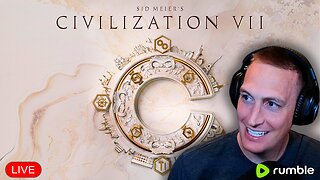 1:45:00
1:45:00
RG_GerkClan
9 hours ago🔴LIVE Sunday Special - It's Time for World Domination - Civilization VII - Gerk Clan
41.3K10 -
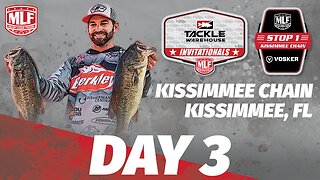 LIVE
LIVE
Major League Fishing
4 days agoLIVE Tackle Warehouse Invitationals, Stop 1, Day 3
238 watching -
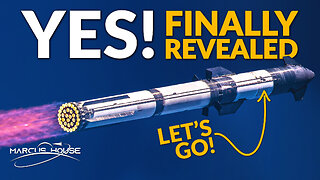 23:34
23:34
marcushouse
10 hours ago $13.10 earnedBREAKING: Starship Launch IMMINENT – But What’s This SURPRISE Flight 9 Plan?! 🚀🔥
87.1K8 -
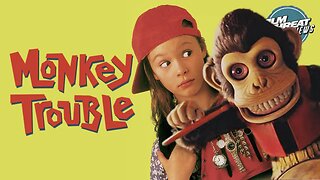 8:43
8:43
Film Threat
1 day agoTHE MONKEY | Film Threat Reviews
80.8K3 -
 15:55
15:55
TSPLY
1 day agoThe Media Is Very Afraid Of FBI Director Kash Patel
63K51 -
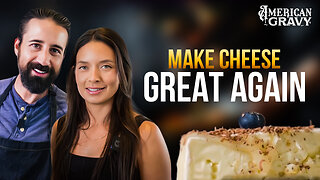 6:57
6:57
Cooking with Gruel
1 day agoMake Cheese Great Again
49.2K14 -
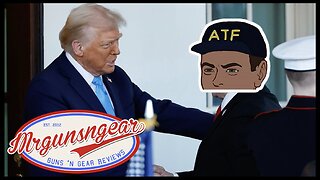 5:17
5:17
Mrgunsngear
1 day ago $9.09 earnedPresident Trump Has Appointed A New ATF Director
52.9K37 -
 48:17
48:17
Athlete & Artist Show
8 days ago $6.44 earnedS5E1: Chucky Announces First Kid, 4 Nations Face Off, and more!
89.8K4 -
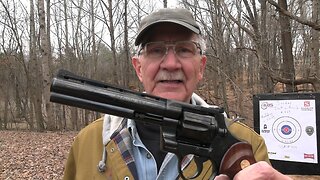 38:30
38:30
hickok45
12 hours agoSunday Shoot-a-Round # 269
90.8K19